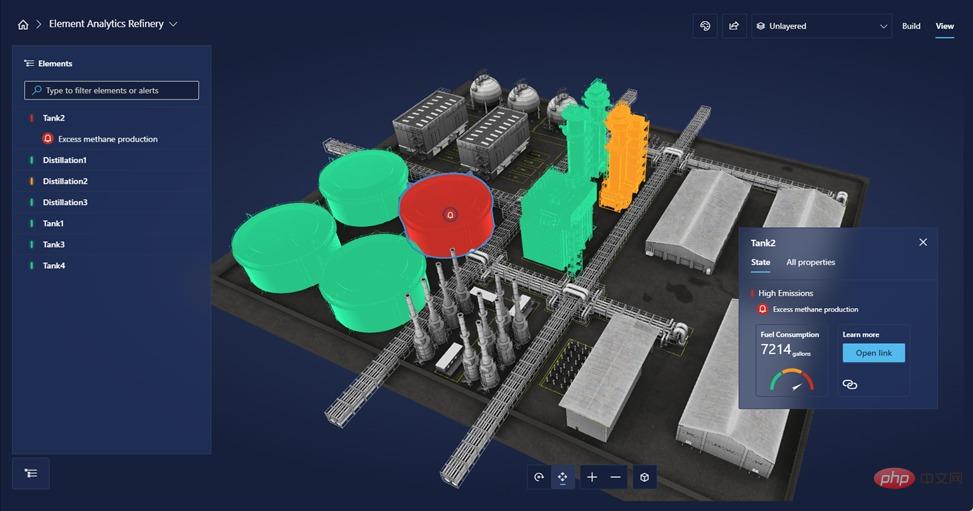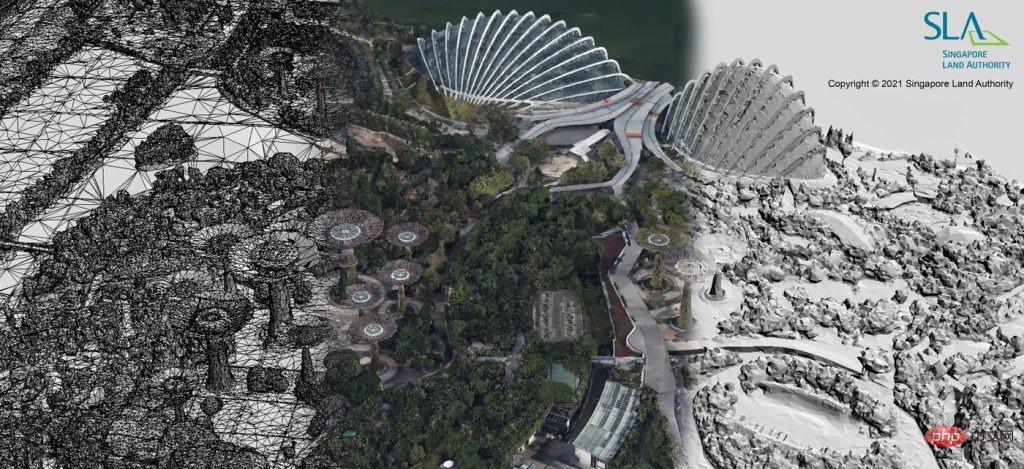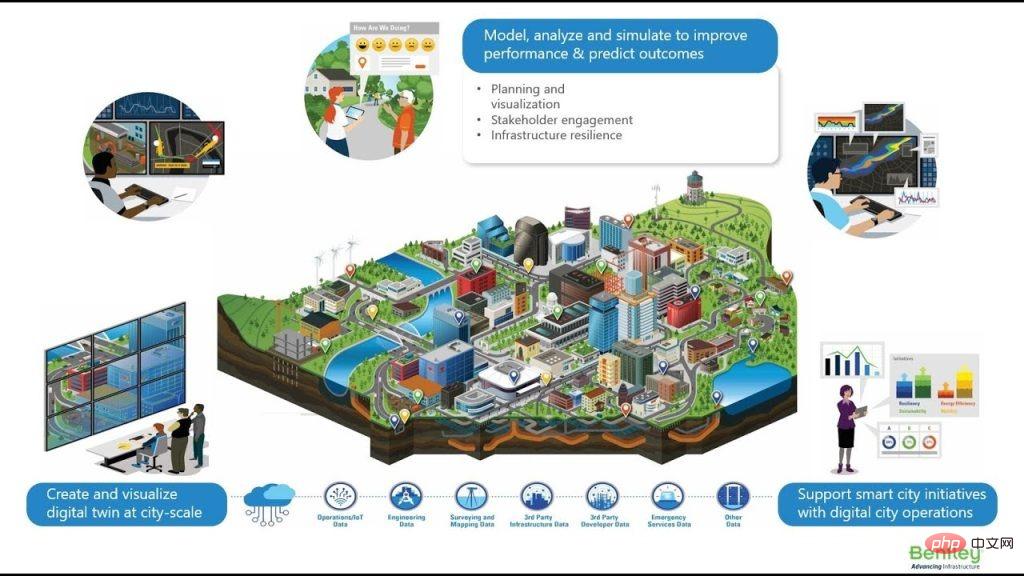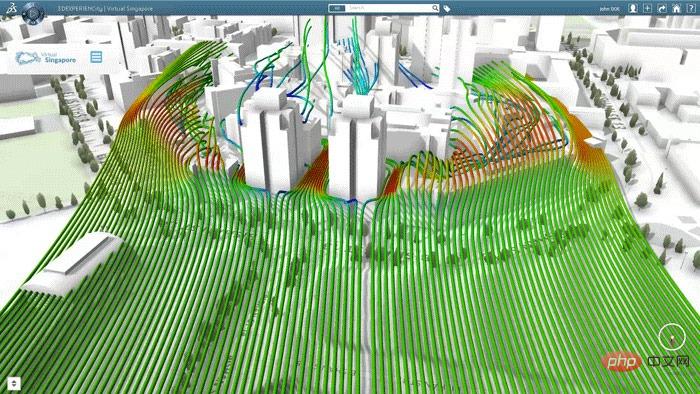
Digital Twin, also known as "digital twin", is to make full use of physical models, sensor updates, operation history and other data to integrate multi-disciplinary and multi-physical quantities The multi-scale, multi-probability simulation process is mapped in the virtual space to reflect the full life cycle process of the corresponding physical equipment.
The most important inspirational significance of digital twin is that it realizes the feedback of real physical system to spatial digital model. The U.S. Department of Defense was the first to propose the use of digital twin technology for the health maintenance and security of aerospace vehicles.
The introduction of digital twin technology is the most groundbreaking innovation of the 21st century. Today, digital twin technology has direct applications in various economic sectors, especially in manufacturing, healthcare and other fields. Recently, the AEC (Architecture, Engineering & Construction) industry has also shown a tendency to create digital twins to address business disorganization.
The adoption of this future technology allows us to move from building one brick at a time to building one blockchain at a time. Architects, urban designers and city planners are using the technology to create virtual world replicas of the built environment to understand the long-term viability of their work.

© Digital Twins of Water Cube Pilot, ARUP
The first description of digital twin technology can be traced back to David Gelernter's 1991 book "Mirror Worlds" (Mirror Worlds), in which he discussed the impact of computing technology on Future world implications. However, the concept and model of digital twins were first publicly introduced by Michael Greaves in 2002 at the Society of Manufacturing Engineers conference in Troy, Michigan. He proposed the concept of digital twins as a research model for product life cycle management. The term “digital twin” was officially coined by NASA’s John Vickers in the “2010 Roadmap Report.”

© Microsoft – Azure Digital TwinsHow do digital twins work?
© Challengee AdvisoryAs shown in the image above, the digital twin so created can be used to understand what has been built and what has not been built through its complete life cycle the particularity of the environment. Analyzing the data in conjunction with other sources of information helps to understand the origins of the corresponding topic of study and to make predictions about its future.
Generally, there are similarities between digital twins and 3D modeling based on user interface and visualization. However, what differentiates them is the data factor. While 3D modeling is limited to providing a view of an object, a digital twin provides a view of the object and real-time data. Digital twins go one step further in exploring how various environmental conditions will affect an object over time.
© ArcGISHow can digital twins improve urban planning?
Municipalities and other local governing bodies can benefit from digital twin technology by using data for planning, finalizing investment strategies and identifying opportunities. They can simulate proposed policies in a virtual world and study their impacts before implementing them in the real world. Globally, cities such as Singapore, Helsinki and the United Arab Emirates are investing in digital twin technology to achieve goals ranging from sustainable development to transit-oriented development, construction renovation projects and virtual tourism scope.

© Courtesy of Singapore Land Authority
With global warming and climate change alarmingly increasing, digital twin technology can help map future environments and their impact on cities. Data such as sea level rise and tectonic plate movement in virtual cities can be used to guide the development of physical cities. By assessing risk, cities can be better prepared to mitigate natural disasters such as floods, earthquakes, tsunamis and hurricanes.
Due to poor construction quality, building collapse has become a daily occurrence in the city, resulting in loss of lives and resources Loss. Creating a digital twin before starting the physical construction process helps determine the suitability of building materials and practices. This will help create safe and healthy communities and help urban communities thrive. Municipalities can use this data to conduct reviews of the structural strength of older buildings so that communities can be evacuated in a timely manner to prevent any physical damage.
The data obtained from the digital twin can be used to optimize building services systems, which will help reduce the energy consumption and operating costs of the structure. City planners can also identify the potential for building rooftops to harness solar energy to power buildings. The full spectrum of renewable energy can always be explored in digital twin cities to help reduce the urban heat island effect and increase the self-sufficiency of buildings.

© Ton De Vries – YouTube
With the help of With data from digital twin cities, transportation planners, together with city planners, can determine the likelihood of bottlenecks and traffic congestion in the physical city. The need for flyovers and road extensions can be pre-determined by identifying the growth in road vehicles. Mass rapid transit systems (MRTS) can be optimally tested and designed to enhance the effectiveness of urban public transportation to accommodate urban expansion.
The possibility of digital twins is not limited to the technical aspects of urban planning, but to further explore the revenue generation of virtual tourism. While the market already offers 360-degree panoramic views of streets and buildings. Digital twins take this technology a step further. In a digital twin, people can do more than just look at a place. They can shop, play, learn and even become citizens of a virtual city.
For example,Virtual Helsinkiis a digital twin of downtown Helsinki, created with high-quality 3D virtual reality technology by Zoan, that people can visit and do activities virtually. Virtual tours promote a sustainable lifestyle by allowing people to experience the world from the comfort of their homes.
While many countries have yet to explore the potential of digital twin technology, Singapore has created a field test case for its virtual appearance. The city-state model includes 3 million street-level images and 160,000 aerial images. More than 1 billion data points are plotted in 3D, equivalent to more than 100 terabytes of data. The foundation of the model will rely on 14 core data sets, including land use, tree cover and underground utilities. The entire island will be continuously mapped using aerial and street mapping tools to keep the digital twin relevant and in line with Singapore’s development.

© AEC Magazine
With its digital twin, Singapore envisions solving its long-standing urban heat island effect problem. The virtual city will be used to study the feasibility of new building developments in the city and their impact on the surrounding environment. Policymakers will also look at models that identify potential infrastructure pitfalls and come up with appropriate solutions for future Singapore. In the future, Singapore also plans to use digital twins to reconstruct accident scenes through digital forensics and scenario planning for autonomous vehicles and robots.
The advantages of digital twin technology encourage global IT leaders to work hard to advance digital twin software. Leading IT giants, namely Microsoft, GE Digital, Siemens, and Dassault Systemes, have created digital twin software. Innovators in the AEC industry, such as Cityzenith, have launched digital twin software programs specifically for the built environment. Another leading digital twin software is SmartWorldPro, which aids in the design and management of buildings and other real estate forms.
Using digital twin technology in urban planning can improve the decision-making capabilities of stakeholders. It builds hope for a future city that is more sustainable, people-centred, organized and desirable.
The above is the detailed content of Digital twins and future city construction. For more information, please follow other related articles on the PHP Chinese website!




